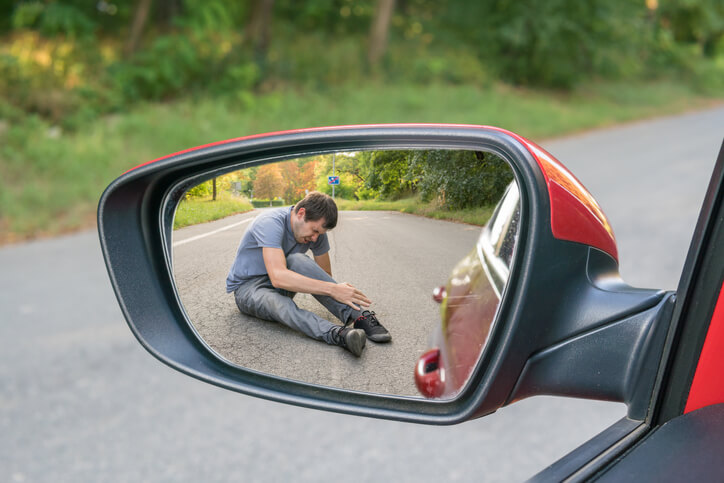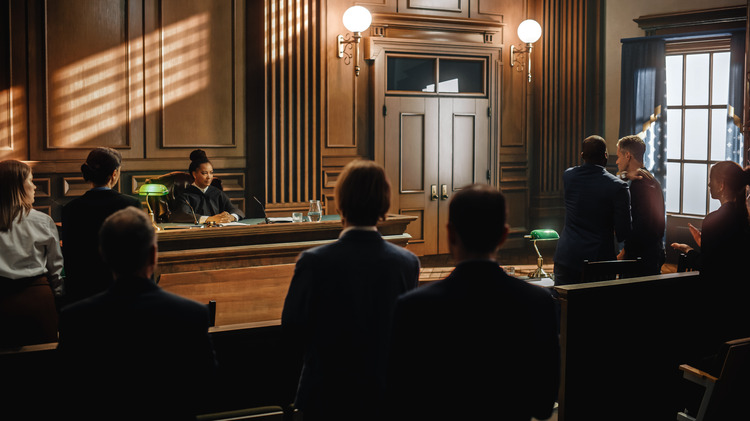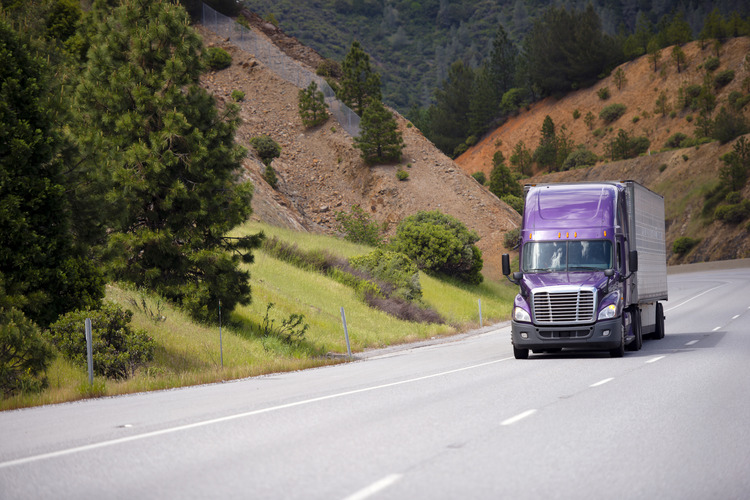Hit and run car accidents can be devastating. In addition to physical pain, they also cause the mental anguish of not knowing whether the at-fault driver will be brought to justice.
These incidents happen all too often in the state of California, and their outcomes can be bleak. According to the Los Angeles Daily News, the LAPD only solved 8% of hit and run incidents in 2017. While that low closed case rate reflects a large percentage of drivers who had property damage only and simply didn’t want to pursue a case, plenty of victims on that list also suffered injuries or fatalities.
Making matters more concerning, California has a high rate of these types of accidents, and they are growing each year. National statistics show that from 2009 to 2016 fatal hit-and-runs increased around 7% each year. They’ve also shot up in California, hitting a 25 year high in 2016 with 369 deaths. California leads the nation in overall fatal hit-and-run crashes as of 2016. Our large population doesn’t excuse us, either, considering we still rank 7th on a per capita basis.
If you or someone in your family has been hurt in a hit-and-run car accident in San Luis Obispo, you likely know how bad things are without needing to glance at a single statistic. You may be wondering about your options for not just seeking justice but also financial compensation to pay for your losses. Medical bills, lost wages, out-of-pocket costs, and other damages could be piling up as of this moment.
Working closely with police, your insurer, and an experienced San Luis Obispo car accident lawyer are your best options. They can each help you build a case to identify the driver. Or, at least, assess all of your losses. If you are unable to identify the driver, you can file a claim on your own insurance or possibly with the California victims’ compensation fund.
Hit and Run Laws in California
There’s no mistaking it: hit and run car accidents are a crime in California.
California Vehicle Code 20001 states that “the driver of a vehicle involved in an accident resulting in injury to a person, other than himself or herself, or in the death of a person shall immediately stop the vehicle at the scene of the accident and shall fulfill the requirements of Sections 20003 and 20004.”
Section 20003 requires that drivers involved in an accident that results in injury or death provide to responding police officers:
- His or her name
- Current residence address
- The names and current residence addresses of any occupant of the driver’s vehicle injured in the accident
- The registration number of the vehicle he or she is driving
- The name and current residence address of the owner to the person struck or the driver or occupants of any vehicle collided with
Drivers are also expected to provide “reasonable assistance” to anyone hurt. This typically encompasses calling them an ambulance, but it can also be related to moving them out of immediate harm’s way or, if you are a licensed healthcare provider, rendering any emergency medical aid you are qualified to administer.
Section 20004 mandates that drivers involved in an accident that results in death, “shall, without delay, report the accident to the nearest office of the Department of the California Highway Patrol or office of a duly authorized police authority and submit with the report the information required by Section 20003.”
Violating these laws is a misdemeanor when property crimes or certain minor injuries are involved. If the accident results in a “serious injury” or death and any driver does not fulfill these duties, they can be charged with a felony.
Misdemeanor hit and runs in California can carry a fine of at least $1,000 and up to $10,000. The perpetrator may also be sentenced to time in the county jail for up to a year. Felony hit and run convicts will be sentenced to at least 90 days in county jail or between 2 – 4 years in state prison. They will also be charged a fine between $1,000 and $10,000.
Options for Obtaining Compensation After You’re Hurt in a Hit and Run Car Accident in California
Filing Under the At-Fault Driver’s Insurance
Without a doubt, your best option for obtaining compensation is to identify and locate the driver who hit you and file a claim on their liability insurance. Following the strategies discussed in the sections below can increase your chances of locating this driver.
Filing under the at-fault driver’s liability insurance is the best way to ensure you get full coverage for all of your accident losses, including property damage and non-financial “general damages” like pain and suffering. Using their insurance also means (in most situations) that your premiums won’t go up and that your insurer won’t consider dropping your policy.
Specific damages you can potentially claim under the driver’s third-party liability policy include:
- Medical treatment costs, past and future, including rehabilitation
- All “reasonable and necessary” out of pocket costs directly related to the accident, such as hospital deck parking fees and certain court expenses
- Lost income as a result of missed work because of your injury
- Pain, suffering and emotional distress
- Loss of enjoyment of life
- Loss of familial relationships and/or spousal relations (consortium)
- Punitive damages, which are only added in cases that proceed to a court decision
Filing Another Third-Party Liability Claim
In some cases when a hit and run driver cannot be located, you and a car accident attorney in San Luis Obispo can identify other parties who share fault.
California’s comparative negligence rules require each party involved in an accident to pay for their portion of fault to injury victims. This rule means that you may be able to obtain some or all of the compensation from another party even if you cannot locate the hit and run driver.
Parties who may be technically at fault include:
- Other drivers involved who did not flee
- Manufacturers of defective vehicles or vehicle components, like brakes
- Known persons affiliated with the at-fault fleeing driver, such as employers if the driver was on-duty, or accomplices
- Rarely, the designer of the public or private roadway where you were hurt if it allowed for unacceptably dangerous conditions
Filing Under Your Own Insurance
If you are unable to identify or locate the at-fault driver, you can potentially file with your own insurance policy. However, the types of policies that would cover you in this instance are all optional, so you may not have coverage for your incident if all you have is the state-mandated bodily injury liability policy.
Policies that can help you out after a hit and run situation include:
- Collision: Pays for the cost of vehicle repairs and property damage
- MedPay: Pays for the costs of your injury treatment and medical services
- Uninsured / Underinsured Motorist (UM/UIM): Pays when the at-fault driver does not have enough liability coverage or completely lacks liability coverage, including situations where the at-fault driver cannot be located
- Health Insurance: Your personal health insurance policy, if you have one, may have to bear the brunt of financial reimbursement if no other means are available
Importantly, UM/UIM insurance typically pays in the event of a hit and run, including when you are a pedestrian, cyclist, or otherwise not using a motor vehicle at the time of your accident. There are some exceptions, so you may need to negotiate with your insurer.
MedPay always pays in the event of a hit and run, with few exceptions, including when you are a non-motorist or when you are a passenger in someone else’s vehicle.
Your insurance companies will want to do everything they can to help you track down the at-fault driver, so don’t be surprised if they want to delay reimbursement while an investigation is pending.
Requesting Victim Compensation
Finally, victims of crimes — including hit and runs — may be eligible to file for funding from the California Victim Compensation Board. This funding can provide for many types of reasonable and necessary expenses related to the accident, including mental health services, relocations, home or vehicle modifications, crime scene cleanup, home security, and more.
Know that these boards are often inundated with requests. Although they always want to help, they may have severe delays in processing your request and ultimately releasing funds. They must also maintain strict rules on who is eligible, so your claim may be denied several times and require appeal before it is honored.
What to Do After You Have Been Injured in a Hit and Run
Taking rapid action after a hit and run collision is your best bet for not only receiving adequate medical treatment but also increasing your chances of locating the perpetrator. While you technically have up to two years to file a claim according to the California statute of limitations, filing as soon as you can aids the investigation and makes insurance companies less inclined to put up a fight.
Regardless of how long ago the accident happened, take the following steps:
1. Report the accident
If you are still at the scene, wait for police to arrive. When filing a report, provide as accurate of information as you are able to recall.
2. Receive prompt medical attention
You should ideally visit the emergency room immediately after the accident. Do not refuse an ambulance if you are seriously hurt. Visit a doctor within 24 hours in all situations. This will ensure better treatment and create a paper trail linking your injuries to the accident.
3. Interview eyewitnesses
Without a doubt, eyewitnesses are the most beneficial resource to locating hit and run perpetrators. Gather statements and contact from all eyewitnesses at the accident scene. Even small details can aid in identifying the driver or their vehicle. If you are not seriously hurt, start questioning witnesses immediately after you and the vehicles involved are in a safe place.
4. Contact your insurance company
Your car insurance company will provide investigative and legal resources as best they can to help you locate the at-fault driver. They have a financial motivation for you to file under someone else’s policy.
5. Be careful when talking with other insurance companies
Once you have opened a liability claim with another insurer, they will do anything they can to reduce your claim’s value or deny it altogether. Refuse to comment on questions of fault or specific medical details about your injury. Say that these facts will be released pending an ongoing investigation.
6. Do not discuss your case in public or on social media
Ideally, you will not discuss your case at all since making certain facts known could hurt your claim or strengthen another party’s defense.
7. Contact a San Luis Obispo Car Accident Lawyer
An attorney provides a valuable resource for your case. They will help you investigate all available evidence, work with insurers, and corroborate evidence of the accident or the at-fault driver’s identity.
8. Cooperate in ongoing police and insurance investigations
You want to stay in touch and up-to-date with both police and insurance company investigations. Staying current informs your legal strategy. It also gives you the chance to contribute statements or evidence that can confirm police leads.
Know Your Legal Rights After a Hit and Run
The most important thing you can do after getting hurt in a hit and run collision is to stay informed of ongoing investigations and to know your rights in general.
Insurance companies, including your own, may make misleading statements about what is covered or whether your accident situation applies to their policy. Reviewing your statement of benefits and working with an experienced San Luis Obispo car accident lawyer gives you the power to assert your rights and bring weight to negotiations.
Know that the disadvantages that apply to criminal hit and run investigations may not apply to your civil case. In the LA Daily News article mentioned above, police investigators mention that criminal charges can’t be brought just because an accident victim knows the vehicle or has a license plate number — they have to be able to identify the driver.
“We can’t place (the suspected driver) behind the wheel, even if he’s the registered owner,” Detective G. McQueen, a supervisor at LAPD’s West Traffic Division, told LA Daily. “We need evidence. We can’t just take everyone into custody.”
However, all an accident victim needs to be able to do is to connect the accident to a specific vehicle. Paint chips, tire marks, eyewitness accounts, video footage, and circumstantial evidence can all aid in vehicle identification. Then, in most situations, the victim can receive coverage under the vehicle owner’s policy regardless of who was behind the wheel.
You have rights, and you have allies. Work with an experienced San Luis Obispo car accident attorney who has a proven record of closing civil cases and helping hit and run victims obtain compensation.
Speak to a lawyer in San Luis Obispo for free during a no-obligation case review when you call (805)-541-0300 or contact us online to schedule your appointment.




